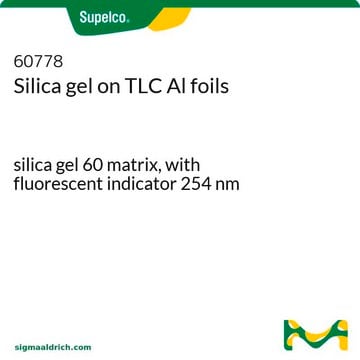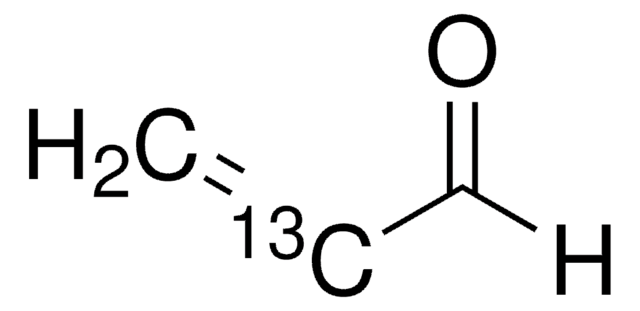64409
Propionaldehyd
analytical standard
Synonym(e):
Propanal
About This Item
Empfohlene Produkte
Qualität
analytical standard
Qualitätsniveau
Dampfdichte
2 (vs air)
Dampfdruck
18.77 psi ( 55 °C)
4.89 psi ( 20 °C)
Assay
≥98.0% (GC)
Selbstzündungstemp.
404 °F
Haltbarkeit
limited shelf life, expiry date on the label
Expl.-Gr.
17 %, 26 °F
2.6 %, 31 °F
Methode(n)
HPLC: suitable
gas chromatography (GC): suitable
Brechungsindex
n20/D 1.360-1.365
n20/D 1.362 (lit.)
bp
46-50 °C (lit.)
mp (Schmelzpunkt)
−81 °C (lit.)
Dichte
0.805 g/mL at 25 °C (lit.)
Anwendung(en)
cleaning products
cosmetics
flavors and fragrances
food and beverages
personal care
Format
neat
SMILES String
[H]C(=O)CC
InChI
1S/C3H6O/c1-2-3-4/h3H,2H2,1H3
InChIKey
NBBJYMSMWIIQGU-UHFFFAOYSA-N
Suchen Sie nach ähnlichen Produkten? Aufrufen Leitfaden zum Produktvergleich
Verwandte Kategorien
Allgemeine Beschreibung
Find all available reference materials for compounds listed in 10/2011 here
Anwendung
- Food products and cosmetics using gas-chromatography with photo ionization detection (GC-PID).
- Infant formulas using gas chromatography with flame ionization detection (GC-FID).
- Household products using gas chromatography coupled to mass spectrometry (GC-MS).
Signalwort
Danger
Gefahreneinstufungen
Acute Tox. 4 Inhalation - Acute Tox. 4 Oral - Eye Dam. 1 - Flam. Liq. 2 - Skin Irrit. 2 - STOT SE 3
Zielorgane
Respiratory system
Lagerklassenschlüssel
3 - Flammable liquids
WGK
WGK 1
Flammpunkt (°F)
-22.0 °F - closed cup
Flammpunkt (°C)
-30 °C - closed cup
Choose from one of the most recent versions:
Besitzen Sie dieses Produkt bereits?
In der Dokumentenbibliothek finden Sie die Dokumentation zu den Produkten, die Sie kürzlich erworben haben.
Kunden haben sich ebenfalls angesehen
Protokolle
-Tolualdehyde; Valeraldehyde; Isovaleraldehyde
Unser Team von Wissenschaftlern verfügt über Erfahrung in allen Forschungsbereichen einschließlich Life Science, Materialwissenschaften, chemischer Synthese, Chromatographie, Analytik und vielen mehr..
Setzen Sie sich mit dem technischen Dienst in Verbindung.












